Issue Archive
Table of Contents
BLOOD COMMENTARIES
BLOOD SPOTLIGHT
VEXAS syndrome
VEXAS syndrome is a severe, progressive autoinflammatory disease in men with clinical features that bridge rheumatologic and hematologic conditions. The constant features that provide the acronym include vacuoles in bone marrow progenitors and precursors as well as E1, a ubiquitin-activating enzyme encoded by UBA1, an X-linked gene that is mutated in myeloid cells. In this Blood Spotlight, Grayson et al review this newly defined acquired disorder due to somatic mutations in the UBA1 gene in hematopoietic progenitor cells. The authors summarize the disease and its treatment while introducing 3 related articles containing the latest data.
CLINICAL TRIALS AND OBSERVATIONS
Brentuximab vedotin in combination with chemotherapy for pediatric patients with ALK+ ALCL: results of COG trial ANHL12P1
Clinical Trials & Observations
Anaplastic large cell lymphoma (ALCL) is a distinct form of T-cell non-Hodgkin lymphoma which accounts for 10% to 15% of all childhood lymphomas. Lowe and colleagues report on the addition of brentuximab vedotin to standard chemotherapy in unselected stage II to IV newly diagnosed patients, finding minimal additional toxicity and favorable event-free survival without any on-therapy relapse. These data suggest an advance in the management of ALCL.
LYMPHOID NEOPLASIA
Venetoclax sensitivity in multiple myeloma is associated with B-cell gene expression
Venetoclax is highly active in some patients with myeloma, but beyond the t(11;14) subset this has not been well defined. Gupta et al demonstrate that venetoclax-sensitive myeloma retains a B-cell-like pattern of gene expression and chromatin accessibility. They provide preliminary evidence that this expression pattern is a better biomarker for predicting venetoclax response than t(11;14) alone.
Oral ixazomib, lenalidomide, and dexamethasone for transplant-ineligible patients with newly diagnosed multiple myeloma
Clinical Trials & Observations
In the randomized TOURMALINE-MM2 trial with 705 newly diagnosed, transplant-ineligible patients with multiple myeloma, Facon and colleagues show that the addition of an oral proteosome inhibitor, ixazomib, to the standard treatment doublet of lenalidomide-dexamethasone results in a clinically meaningful but modest increment in progression-free survival.
ZAP-70 constitutively regulates gene expression and protein synthesis in chronic lymphocytic leukemia
MYELOID NEOPLASIA
Targeting AXL kinase sensitizes leukemic stem and progenitor cells to venetoclax treatment in acute myeloid leukemia
THROMBOSIS AND HEMOSTASIS
A flow cytometric assay to detect platelet-activating antibodies in VITT after ChAdOx1 nCov-19 vaccination
The detection of vaccine-induced thrombosis and thrombocytopenia (VITT) is an immediate problem in many parts of the world. VITT shows striking similarities to autoimmune heparin-induced thrombocytopenia, and these conditions need to be distinguished. Handtke et al describe a functional whole-blood flow cytometry test for detection of platelet-activating anti-PF4 antibodies that may be specific for VITT.
TRANSFUSION MEDICINE
Inherited glycosylphosphatidylinositol defects cause the rare Emm-negative blood phenotype and developmental disorders
Duval et al identify the elusive molecular basis for the red blood cell Emm antigen, which was first identified in 1973. After discovering biallelic loss of function mutations in PIGG, a gene involved in glycosylphosphatidylinositol (GPI) modification, in 3 cases with an Emm-negative blood phenotype, the authors used cell lines with various knockouts of genes involved in GPI synthesis to reveal that the Emm epitope is composed of the second and third ethanolamines of the GPI backbone.
LETTERS TO BLOOD
Low neutralizing antibody responses against SARS-CoV-2 in older patients with myeloma after the first BNT162b2 vaccine dose
Clinical Trials & Observations
Novel somatic mutations in UBA1 as a cause of VEXAS syndrome
Poulter and colleagues describe a series from the United Kingdom of 10 male patients with VEXAS syndrome, including 2 with novel genetic changes affecting methionine 41 of E1.
Therapeutic options in VEXAS syndrome: insights from a retrospective series
Clinical Trials & Observations
Bourbon et al describe a series of 19 patients from France with VEXAS syndrome, including a novel genetic aberration in UBA1, and the outcomes of treatment for those with and those without myelodysplasia.
Vacuolization of hematopoietic precursors: an enigma with multiple etiologies
Cytoplasmic vacuoles in precursors can be seen in a number of clinical settings, including copper deficiency, zinc toxicity, alcohol abuse, antibiotic treatment, myelodysplasia, and VEXAS syndrome. Gurnari et al asked how common VEXAS syndrome is in patients whose bone marrow aspirates show this distinctive feature, finding 2 diagnoses of VEXAS among 24 cases with vacuoles.
BLOOD WORK
-
Cover Image
Cover Image
![issue cover]()
Wright-Giemsa stain showing vacuolization of hematopoietic precursors in a bone marrow of a patient with myelodysplastic syndrome, UBA1 (p.Met41) mutation, and VEXAS syndrome. See the article by Gurnari et al on page 3685.
- PDF Icon Front MatterFront Matter
- PDF Icon Table of ContentsTable of Contents
- PDF Icon Back MatterBack Matter
- PDF Icon Editorial BoardEditorial Board
Advertisement intended for health care professionals
Email alerts
Advertisement intended for health care professionals



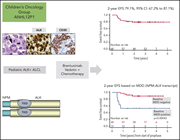

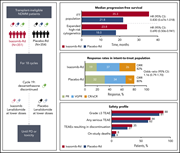

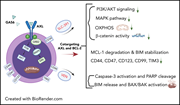
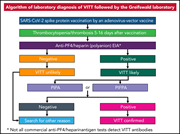
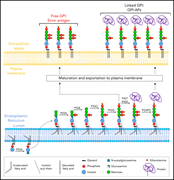

Brentuximab vedotin: frontline help in ALCL
Clinical Trials & Observations